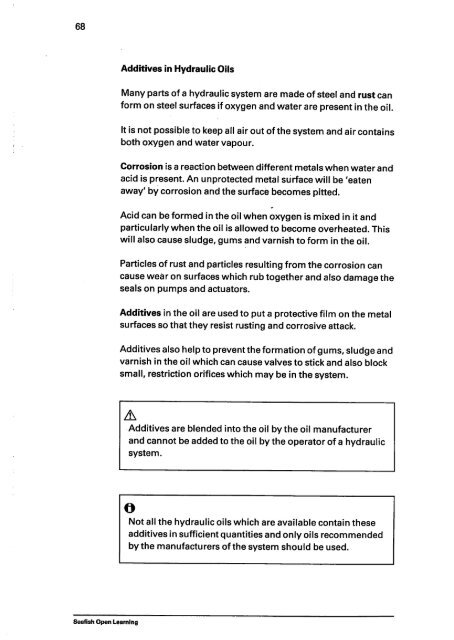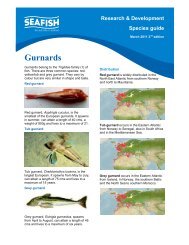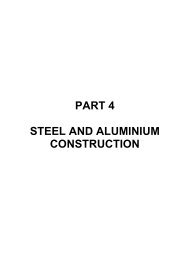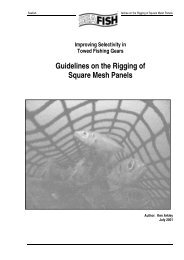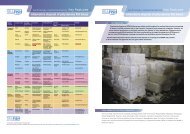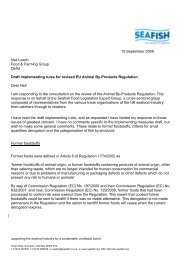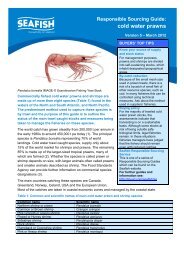Hydraulics - Seafish
Hydraulics - Seafish
Hydraulics - Seafish
You also want an ePaper? Increase the reach of your titles
YUMPU automatically turns print PDFs into web optimized ePapers that Google loves.
68<br />
Additives in Hydraulic Oils<br />
Many parts of a hydraulic system are made of steel and rust can<br />
form on steel surfaces if oxygen and water are present in the oil.<br />
It is not possible to keep all air out of the system and air contains<br />
both oxygen and water vapour.<br />
Corrosion is a reaction between different metals when water and<br />
acid is present. An unprotected metal surface will be 'eaten<br />
awayf by corrosion and the surface becomes pitted.<br />
Acid can be formed in the oil when oxygen is mixed in it and<br />
particularly when the oil is allowed to become overheated. This<br />
will also cause sludge, gums and varnish to form in the oil.<br />
•f<br />
Particles of rust and particles resulting from the corrosion can<br />
cause wear on surfaces which rub together and also damage the<br />
seals on pumps and actuators.<br />
Additives in the oil are used to put a protective film on the metal<br />
surfaces so that they resist rusting and corrosive attack.<br />
Additives also help to prevent the formation of gums, sludge and<br />
varnish in the oil which can cause valves to stick and also block<br />
small, restriction orifices which may be in the system.<br />
Additives are blended into the oil by the oil manufacturer<br />
and cannot be added to the oil by the operator of a hydraulic<br />
system.<br />
©<br />
Not all the hydraulic oils which are available contain these<br />
additives in sufficient quantities and only oils recommended<br />
by the manufacturers of the system should be used.<br />
<strong>Seafish</strong> Open Learning


